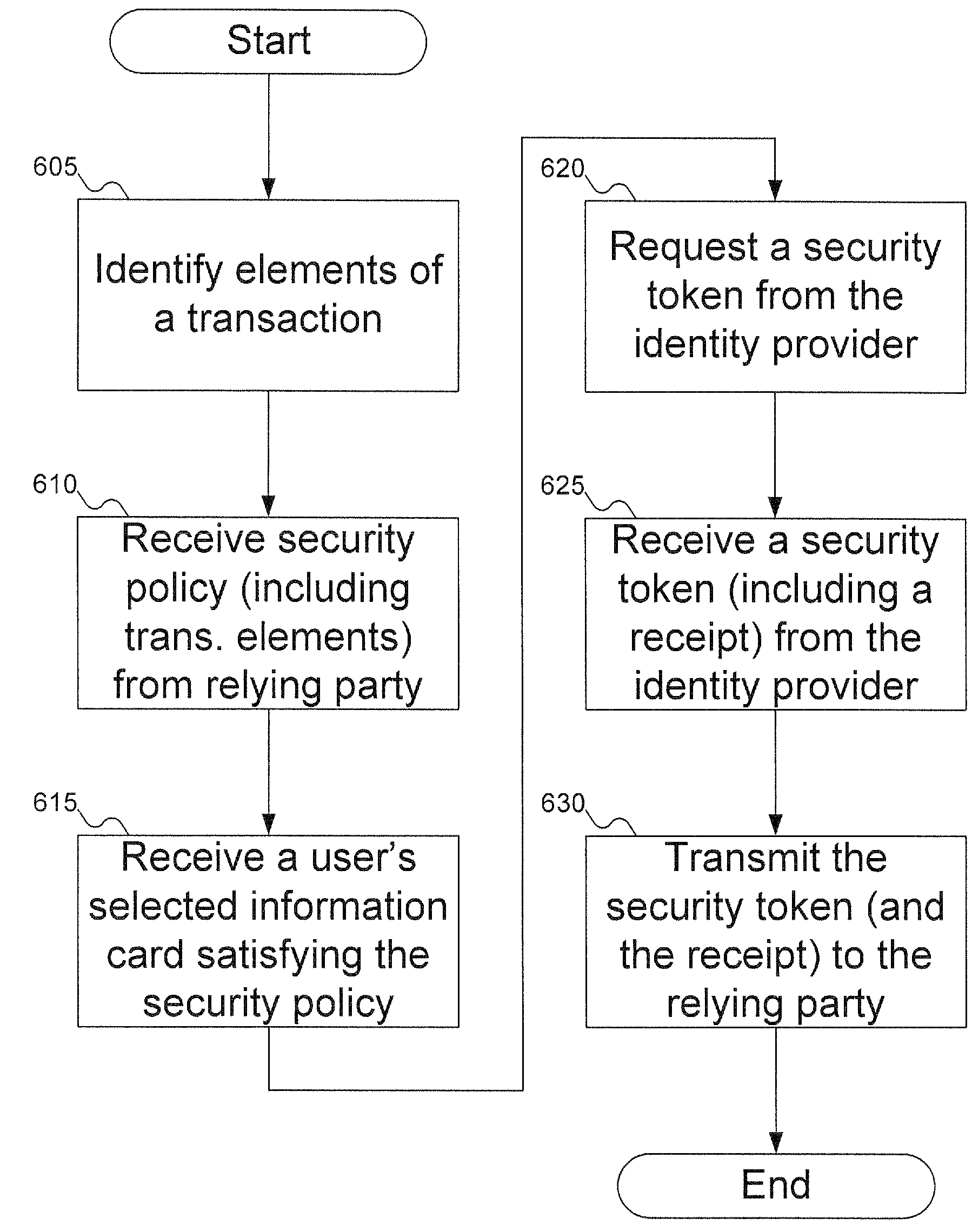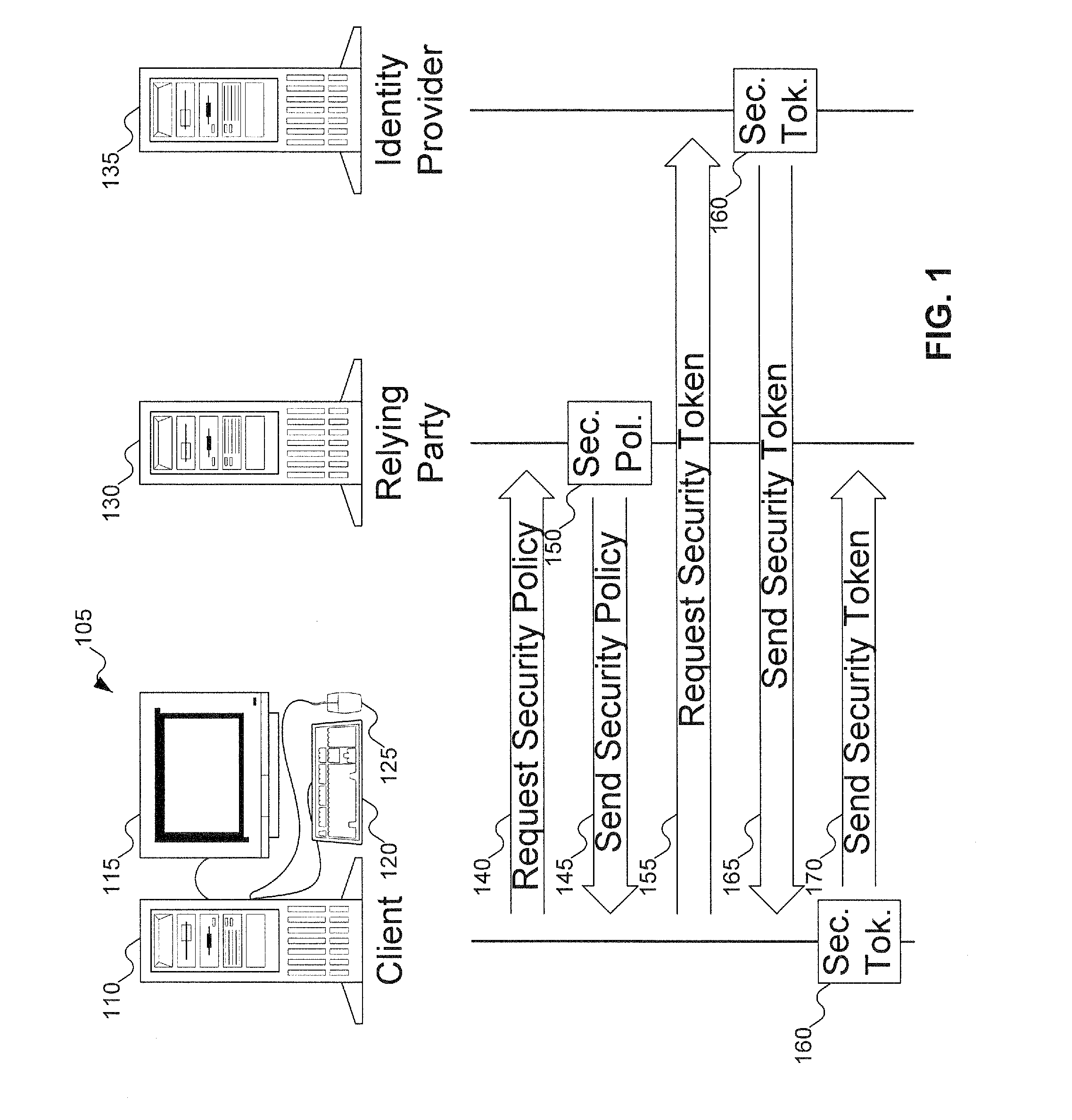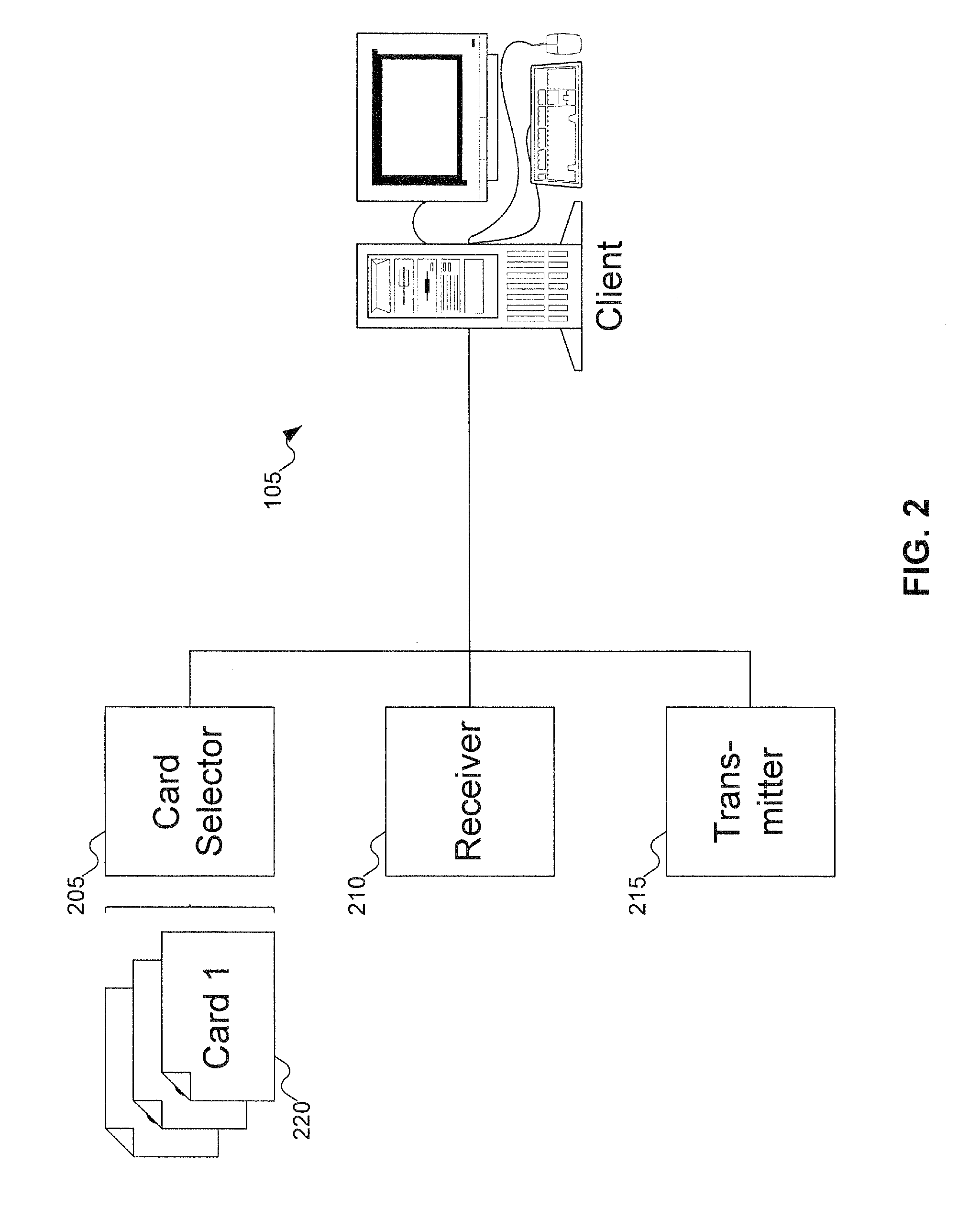Performing a business transaction without disclosing sensitive identity information to a relying party
a business transaction and identity information technology, applied in payment protocols, unauthorized memory use protection, instruments, etc., can solve the problems of user unsatisfactory service providers, user might not be able to use the same username/password combination on each such computer system, and user inconvenien
- Summary
- Abstract
- Description
- Claims
- Application Information
AI Technical Summary
Benefits of technology
Problems solved by technology
Method used
Image
Examples
Embodiment Construction
[0033]Before explaining the invention, it is important to understand the context of the invention. FIG. 1 shows a sequence of communications between a client, a relying party, and an identity provider. For simplicity, each party (the client, the relying party, and the identity provider) may be referred to by their machines. Actions attributed to each party are taken by that party's machine, except where the context indicates the actions are taken by the actual party.
[0034]In FIG. 1, computer system 105, the client, is shown as including computer 110, monitor 115, keyboard 120, and mouse 125. A person skilled in the art will recognize that other components can be included with computer system 105: for example, other input / output devices, such as a printer. In addition, FIG. 1 does not show some of the conventional internal components of computer system 105; for example, a central processing unit, memory, storage, etc. Although not shown in FIG. 1, a person skilled in the art will rec...
PUM
 Login to View More
Login to View More Abstract
Description
Claims
Application Information
 Login to View More
Login to View More - R&D
- Intellectual Property
- Life Sciences
- Materials
- Tech Scout
- Unparalleled Data Quality
- Higher Quality Content
- 60% Fewer Hallucinations
Browse by: Latest US Patents, China's latest patents, Technical Efficacy Thesaurus, Application Domain, Technology Topic, Popular Technical Reports.
© 2025 PatSnap. All rights reserved.Legal|Privacy policy|Modern Slavery Act Transparency Statement|Sitemap|About US| Contact US: help@patsnap.com



